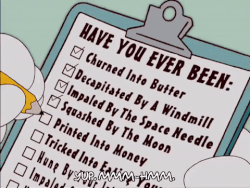Pull Request Etiquette
Pull Requests are by now an industrial standard.
Why should we do code reviews / pull requests?
Focus
The committer will be forced to think about how clear and relevant the change is, simply due to the fact that another human being needs to be able to understand WHAT THE DUCK IS GOING ON.
Learning
Code review is an amazing opportunity for making both the committer and the reviewer learn.
Ensure code standards
Enforce your company style guide and more.
Ensure relevance
Is this change needed?
Is it too big, risky?
OK, the why is clear
How to open a pull request
AKA the reviewee

When to open a pull request
A pull request can be opened whenever the first push occurs.
Pull requests should be opened as draft.
The pull request content
The title should preferably be prefixed by [WIP] (at least that’s the convention at BigPanda).
Do not assign any reviewers, as it’s not review-able yet.
The body of the pull request message should include the wanted gist of the change. This a great place to put a checklist validating the general idea of the change, like a mini design intentions.
Pushing commits
You should push as much as you wish when working iteratively.
Commit messages CAN BE ANYTHING, you’ll reword them later when rebasing. Make them understandable at least for yourself. Use conventions whenever possible, especially when working together with peers on a branch. E.g prefixing with [FIXUP], [SQUASH] and [DROP].
Fetch master and rebase often.
Whilst not mandatory, I do recommend doing at least daily cleanups using git rebase --interactive.
Meet your new best friend: git push --force-with-lease¹ which will force push only if you were the committer of the to be overridden commit, perfect for collaboration.
Preparing for review

Git log should be a poetic story

Commit message format is incredibly important
You’ll be the one to look at in half a year to understand what in the name of Odin’s beard made you write that code.
Each commit should be a single logical change, other dangling FIX or TYPO commits should be squashed.
Git commit format
|
|
Pull request format
Title should NOT be prefixed with [WIP].
Body should include the gist of the change (pun intended).
Links to resources if needed
- dependencies (Other pull requests)
- docs
- runtime instructions
- ticket/issue
Checklist
All tests should pass.
New code should be covered by new tests.
Lint your code.
Style guide MUST be respected.
Git log is pretty and easily review able.
Your branch is up to date with master.
Your pull request is not to HUUUGE
NEVER REQUEST CODE REVIEW BEFORE THIS

Who should be reviewing?
Code owner(s).
Managers (Team Leaders).
Someone from another team.
Including and especially Juniors.
After receiving comments
Fixes in new commits, prefixed [PR-FIX].
Don’t try to solve everything at once.
Be responsive and notify after fixing.
Have patience when elaborating.
Don’t guard your code with your ego.
If you disagree strongly, consider giving it a few minutes before responding.
The reviewer

Reviewers
Guards the commit history.
Are NOT responsible to test the code.
Should response within a logical time, or ping the reviewee to opt out of the review
The review process
Read the pull request title and body to see that you get the need and value of the pull quickly.
Validate sane git commits.
Validate CI checks are passing.
NEVER REVIEW CODE BEFORE THIS IS DONE
Actually reviewing code
Review commit by commit to get the story of the change.
Always comment on lines in diff view, not in general discussion at the pull request page.
Nitbitting VS Bikeshedding 1/2
Comment on all that gets your attention, including typos, However, Don’t lose sight on what the pull requests actual value.
Ask in a polite way if you need elaboration.
Use Emoji!!1.
Nitbitting VS Bikeshedding 2/2
You can comment on things that weren’t changed in the current pull request, don’t block because of it.
Never SCREAM IN CAPS (unless pun).
MANNERS MAKETH MAN.
Code quality
Code smells.
DRY.
Immutability.
Functional.
Performance.
Testable.
Readable.
Tests quality
Good vs Bad path.
🦆 Typing.
Black box.
Differentiate Unit VS Integration VS System.
Documents the code.
Async vs in person
Don’t forget, you can do the review in person.
A face 2 face review can surface surprises.

Approve / Block / Comment
Commenting
Whilst it might be very polite only to comment and not blocking / approving, you need to take a stand, especially as the main reviewer.

Blocking
You SHOULD block the pull request if there’s anything that’s a blocker in your opinion.
State what is the blocker explicitly.

Just don’t be a douche about it.

Approving
Ensure that you agree that code provide the value that satisfies the need of the pull request, with the high standards you would set for yourself.

NEVER EVERZ APPROVE WITHOUT APPROPRIATE GIF

Yay, you got those sweet ✅s!!1

AND DAT GIF

DAT 2

Cleanup
Squash those dangling [PR-FIX] commits into the logical commit they belong.
Fetch master and rebase one last time.
Wait for CI (you shouldn’t be able merge without it anyhuze).
Merge away!
Delete the freaking branch after it’s merged
Here’s a sweet git alias for ya
|
|

Cheers and happy reviewing!
